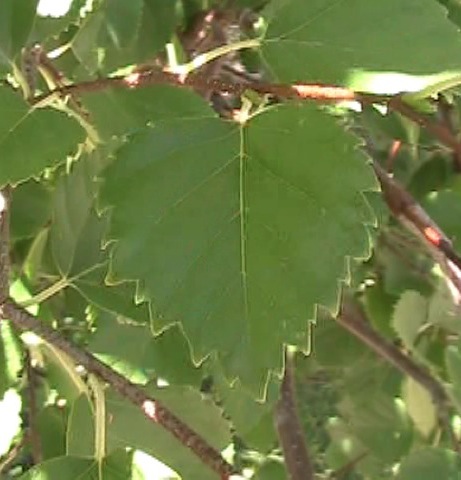| PSC 2620: Woody Trees and Shrub | Course Home | Week 11 |
Betula occidentalis - Water Birch
Plant Viewer
 |
 |
| The leaf of Water Birch have a rounded triangular shape with a doubly serrated margin. They are 1-2 inches long. | It is a multi-stem tree. |
 |
 |
| The bark has a glossy reddish-brown color and prominent horizontal lenticels. | The catkins are two inches long and appear in the spring. |
Plant Description
Betula occidentalis, or Water Birch, is a small to medium-sized multi-stemmed tree. It naturally occurs along streams and other bodies of water where it has ample amounts of water. It appears to tolerate drier conditions quite well though, as I have seen it thriving in several hot locations with poor soil. It is similar in appearance to Betula nigra, and it can be difficult to tell the two apart, especially when young. It grows 20-30 feet high and has a slightly pendulous habit and branches low to the ground.
The bark is a glossy reddish-brown color with prominent horizontal lenticels. The bark of Water Birch is typically darker than that of River Birch, and does not exhibit any exfoliating feature. Two inch long catkins form on the tree by late spring.
The leaves are 1-2 inches long and have a rounded triangular shaped. They are shorter and stouter than the leaves of Betula nigra. The leaves have a single or doubly-serrated margin. The leaf is a dull, but dark green color and slightly glabrous. In the fall the leaves turn a yellow color. Leaves are arranged alternately on the stem.
Landscape Use
Betula occidentalis is an underutilized plant in the landscape. Its slightly-weeping multi-stem form is attractive and the tree could be utilized in either a grouping or as a single specimen. It is also well suited to use in a naturalized landscape setting.
Because it branches low to the ground, it is not recommended for use close to walkways or streets, where its branches will interfere with traffic.